You see it in the produce section every time you’re shopping for your fruits and veggies, but you always (intentionally) ignore it…
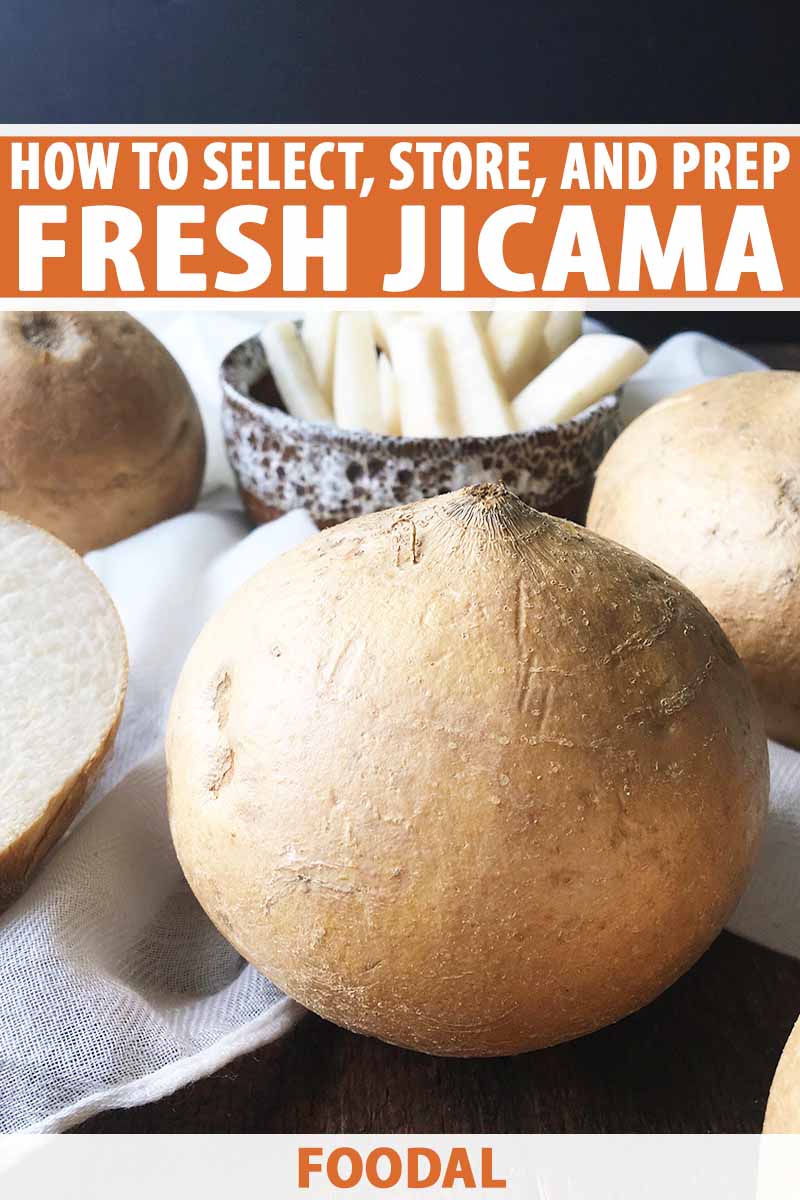
Pronounced “HICK-ah-mah,” jicama is often an overlooked veggie pushed to the side of the vegetable cooler at the grocery store.
It may not be the prettiest or the most vibrant among its other vegetable friends, but with our helpful how-to article, you’re going to learn to love it!
Jicama is a root vegetable native to Central America, and is actually a member of the bean family. With a high amount of vitamin C and fiber, it’s a smart ingredient to have as part of your daily diet.
It resembles a potato, with a more spherical shape. The inedible skin is thin, light brown, and papery. The light white flesh will remind you of an apple – crisp, slightly watery, lightly sweet, and refreshing.
It is a very versatile veggie: you can eat it raw in salads and slaws, or use it as a garnish. You can bake it, fry it, saute it, and pickle it.
What’s interesting about the flesh is that it remains very crispy, even after it cooks for a long period of time. That crunch factor is one of the deliciously defining qualities of this ingredient.
Before using it in a recipe, take a look at our guidelines on how to select, store, and prep your new favorite vegetable.
How to Select
Choose jicama that is firm when you give it a light squeeze. The skin should feel dry, it should be free of any significantly large blemishes (a few small ones are fine), and it should not look wrinkled or shriveled.
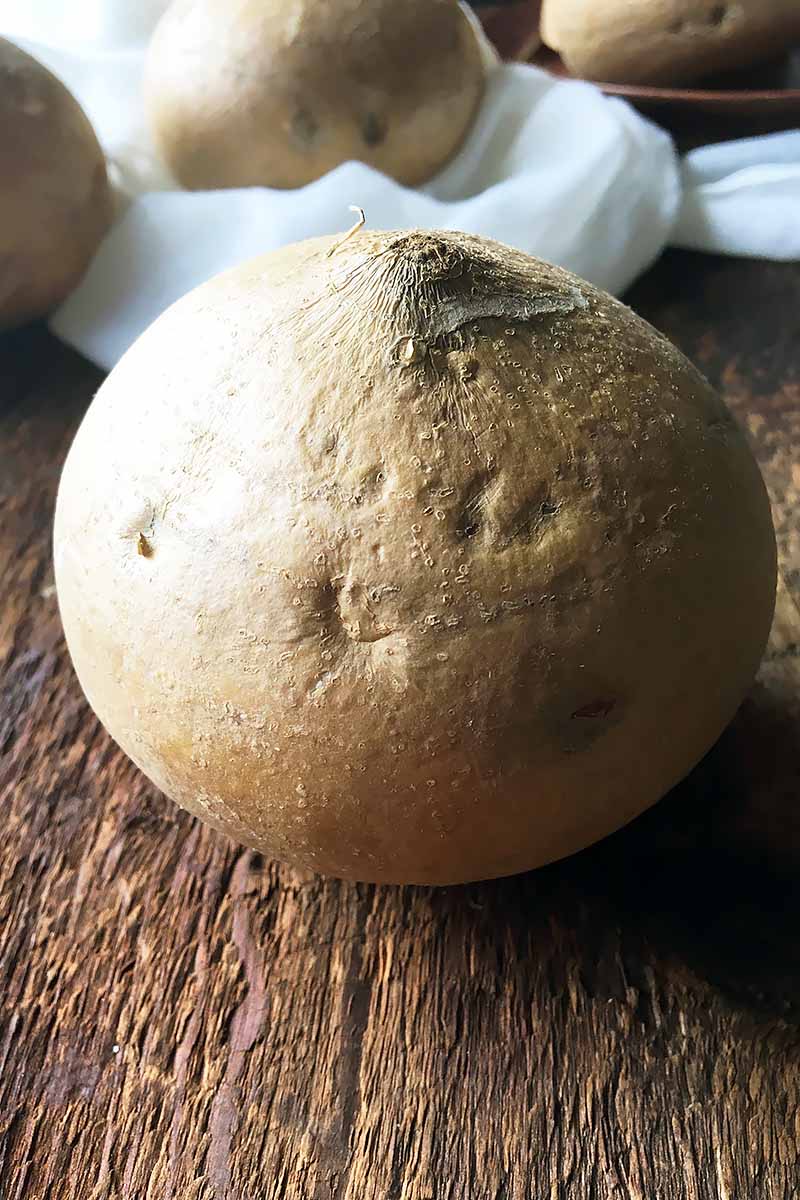
There is no noticeably rotten scent if you pick it up and take a small whiff.
How to Store
If using within two days after purchase, feel free to store it at room temperature in a dry area away from direct sunlight.
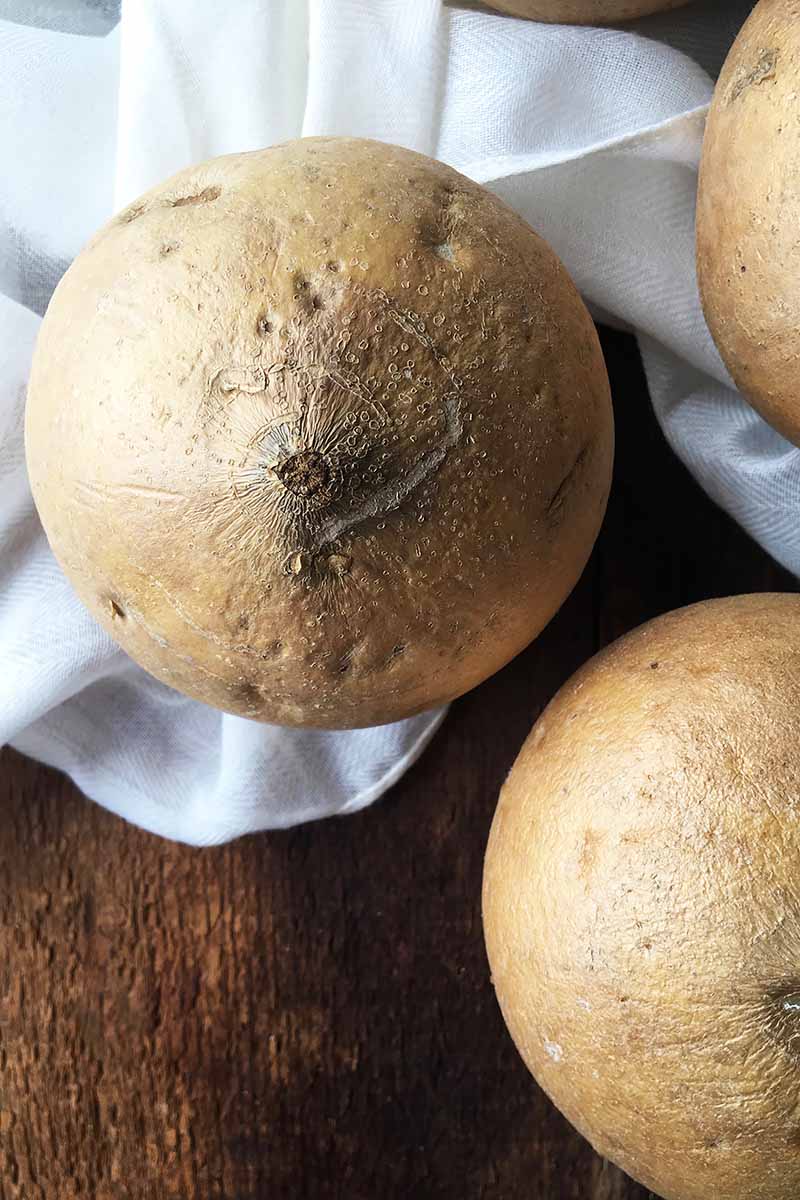
Storing for longer than a couple days? Keep it in the vegetable drawer of your refrigerator on top of a towel or a couple layers of paper towels. Moisture encourages it to soften and mold.
I recommend using it within a week after purchasing. After a week or so, the poor veggie will show signs of deterioration like mushiness, mold, and shriveled skin.
How to Prep
Below are the basic steps for how to prep for all of your crunch-ified recipes!
Step 1 – Peel the Skin
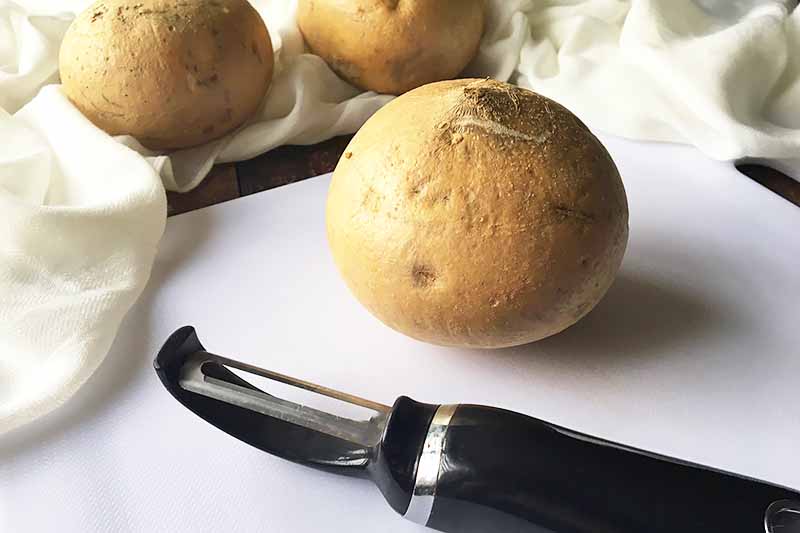
Rinse and dry the whole vegetable.
Because the papery, thin skin is similar to that of a potato, it’s simple to remove. Easily peel it off with a vegetable peeler.
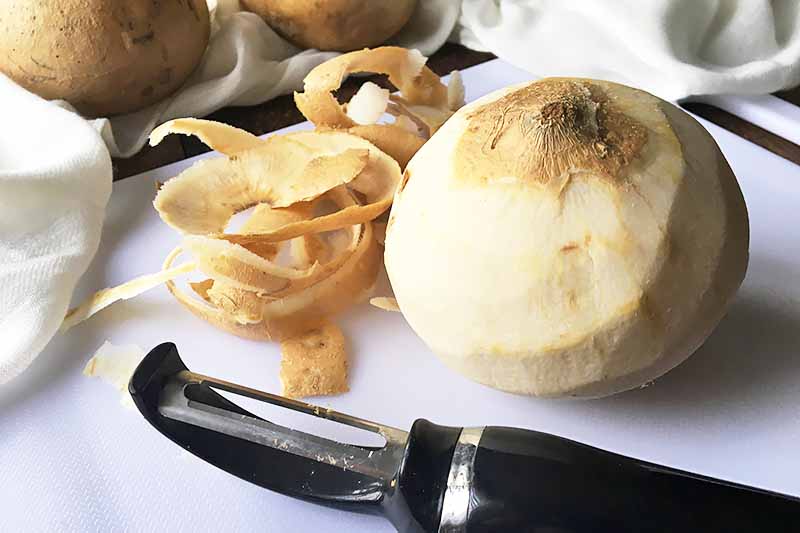
You don’t need to worry about getting off all the skin on either end of the veggie, since both ends will be sliced off in the next step.
Step 2 – Cut Ends
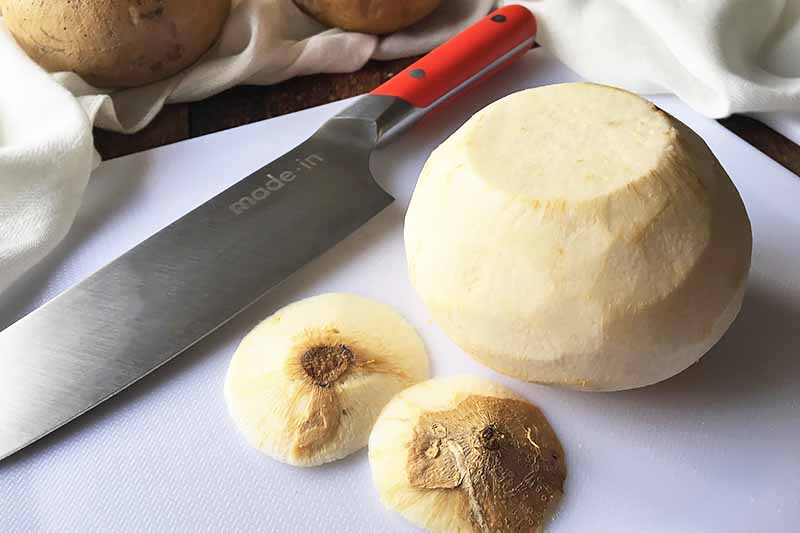
Slice both ends and discard.
Step 3 – Slice and Shape
At this point, cut it into the shapes that you will need for your recipe.
Here a few suggestions:
For French Fries:
Slice it in half.

Slice each half across the longer side to get 4 long, skinny quarters.

Cut each quarter into thin slices.

Cut the slices into skinny rectangles that are roughly the size of a french fry.

For Matchsticks:
Slice it in half, just like you would do for making the french fry shapes.
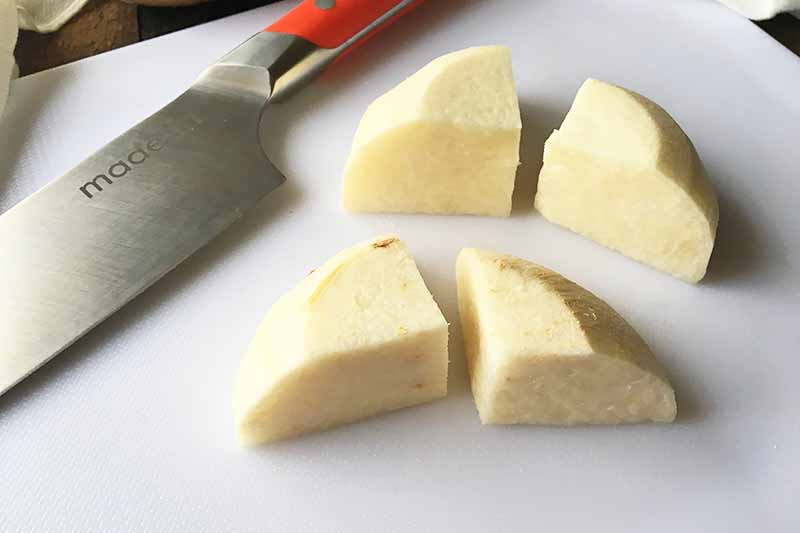
Slice each half across the shorter side to get 4 short, squat quarters.

Cut each quarter into thin slices, then cut the slices into matchstick-sized pieces.
For Cubes:
Cut as you would for french fries or matchsticks, with the additional step of slicing each rectangle into cubed pieces.
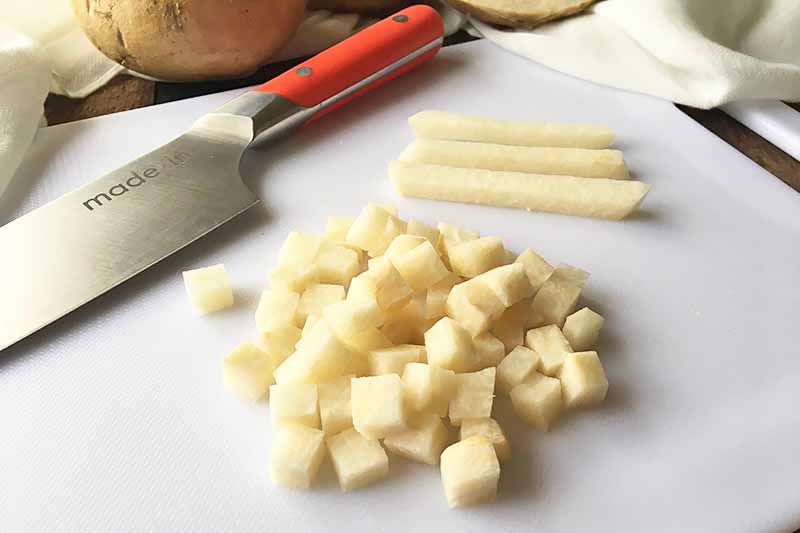
For Thin Slices:
With the veggie still whole, except for the sliced off ends, use a knife (or a mandoline for super thin, precise slices) to carefully cut even slices from top to bottom.
Step 4 – Optional Storing
You can store the cut pieces in an airtight container in your refrigerator for up to one day before using in your recipe.
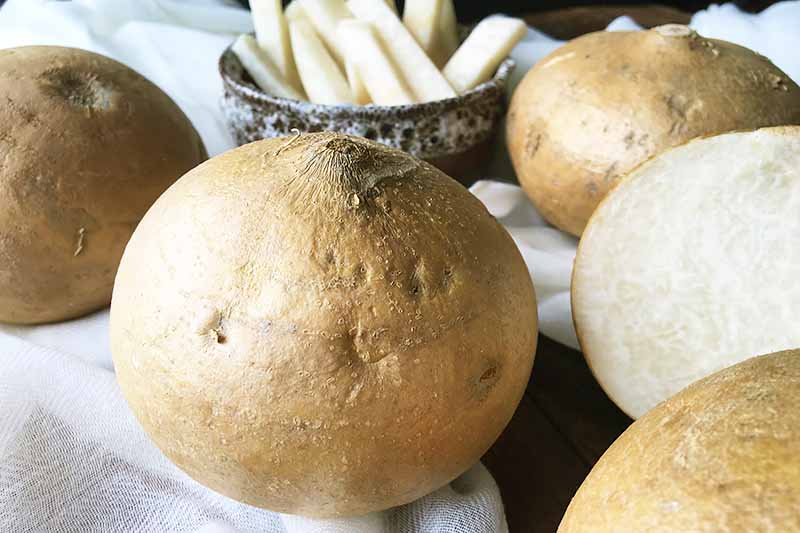
Unlike a peeled apple or potato, the flesh oxidizes at a very slow pace, so it won’t brown quickly. You don’t have to rub it with an acidic fruit like lemon, or submerge it in water.
How to Cook
Option 1 – Serve Raw
The wonderfully crisp texture is ideal for serving raw! You can use it in any variety of ways.
Toss a handful into cold salads or sides. Use some thinly sliced matchsticks as a crunchy garnish on top of sandwiches. Add them into your typical vegetable mix you like to pickle. Serve slices alongside carrots and celery with your favorite hummus or dip.
Option 2 – Cook
Searching for a veggie that will add delicious crunch to your favorite dinnertime dishes? You can bake, fry, steam, stir-fry, and saute this wonder of the produce aisle as a tasty addition to many meals.
Craving french fries? After you prep and cut it into a french fry shape, season the pieces and bake or fry them. This is perfect for when you are making a healthier version of french fries to bake or fry, as they will look just like traditional french fries!
Wish you had a low-carb wrap for your tacos or burritos? You can use thin slices of jicama as the wrap! Slightly soften the slices by microwaving them in a bowl with a few tablespoons of water for about 2 minutes. After you pat them dry, they should be pliable enough to be used as a taco shell, or gently rolled for a small burrito.
Crave That Crunch!
Beauty isn’t everything. What lies beneath that brown, papery skin is an ingredient with a crisp texture and refreshing taste you’ll want to include in many of your future dishes.
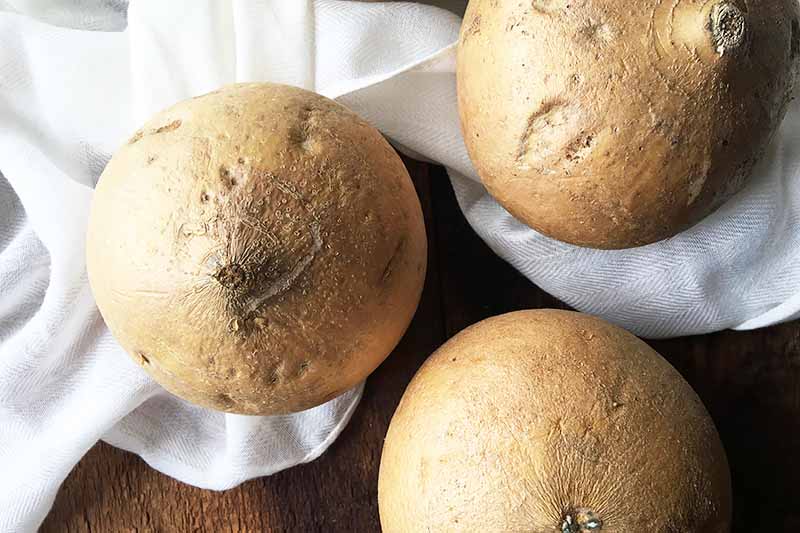
Grab a few from the store soon, and let us know what you decide to make! Will you go raw, or cooked? Small garnish, or big appetizer?
Have you ever used jicama before? Share some of your favorite recipes (we’ll have some coming your way soon!), or any other prep and storage advice, in the comments below!
Photos by Nikki Cervone, © Ask the Experts, LLC. ALL RIGHTS RESERVED. See our TOS for more details.
About Nikki Cervone
Nikki Cervone is an ACS Certified Cheese Professional and cheesemonger living in Pittsburgh. Nikki holds an AAS in baking/pastry from Westmoreland County Community College, a BA in Communications from Duquesne University, and an MLA in Gastronomy from Boston University. When she's not nibbling on her favorite cheeses or testing a batch of cupcakes, Nikki enjoys a healthy dose of yoga, wine, hiking, singing in the shower, and chocolate. Lots of chocolate.

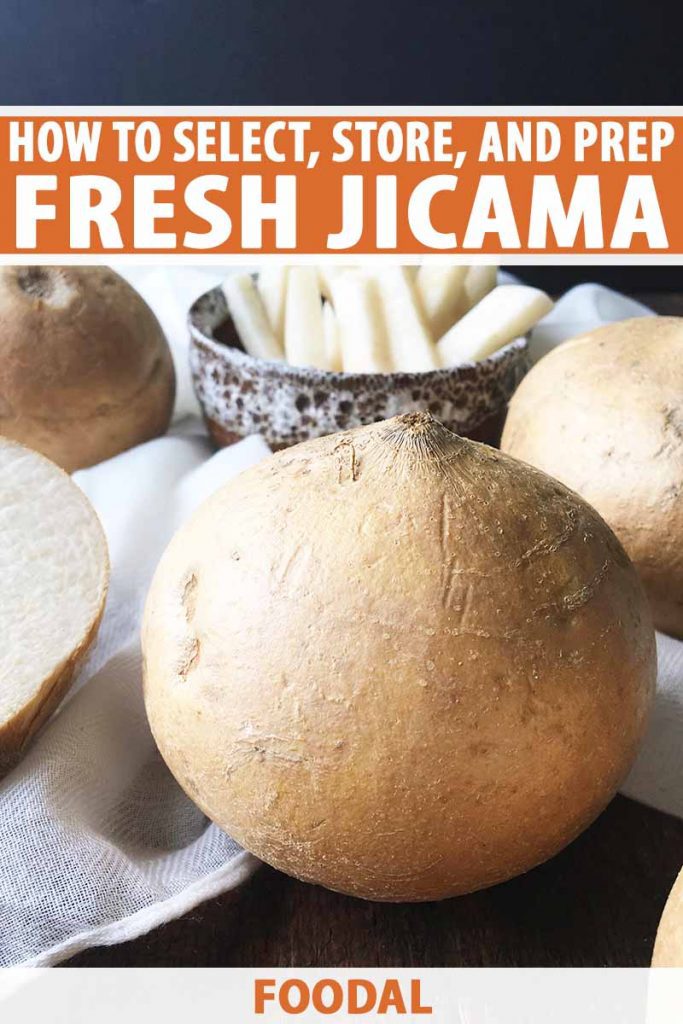

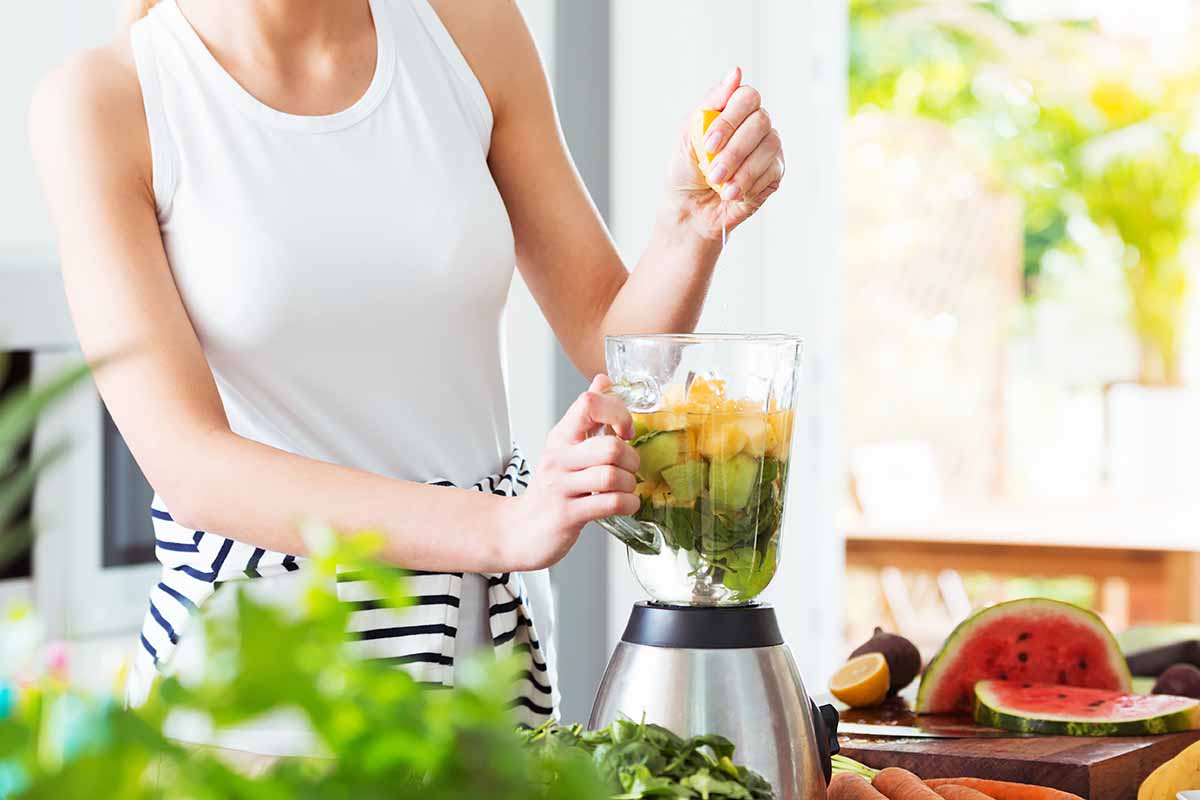

Jicama sticks with lime juice and sprinkled with chili powder
A classic!